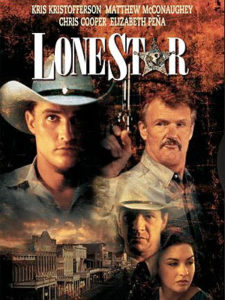
Director Gregory Nava creates a film about the mass violent killings of factory women workers in Ciudad Juárez, Chihuahua, a maquiladora border. This drama is based on true events, and Nava was very interested in this story. He created a film that keeps you on the edge of your seat, anticipating what will happen next. The women in the film work in poor conditions, long hours, and inadequate wages. This film has a connection to the North American Free Trade Agreement, which contributes to the poor treatment of the factory workers. To learn more about the North American Free Trade Agreement, there is a documentary called Maquilapolis:City of Factories, which tells the story of how women in Mexico are being affected by this agreement.

http://www.pbs.org/pov/maquilapolis/film-description/
Lauren Adrian(Jennifer Lopez), is a reporter for the Chicago Sentinel, who is of Latino descent, but does not portray this. For example, she highlights her hair blonde. Editor, George Morgan(Martin Sheen), sends her to Mexico to investigate the homicides of women that work in the factories, and particularly a recent victim of rape and attempted murder. Lauren arrives in Mexico, and contacts a previous co-worker, Diaz(Antonio Banderas), and they join together to report on this story. Lauren quickly learns that the United States government, and the Mexican government play a corrupt role in these murders, and why they are going unsolved. Lauren risks her life for this story by going undercover, for the justice of the murdered victims and for Eva Jimenez, the victim that escaped. Lauren also addresses her true identity that she has blocked out for so many years, and states the truth, that she comes from a family of farm workers from Mexico. Laurens story never gets published, due to the fact of the Free Trade Act and its connection to the U.S. and Mexico for political and financial gain
This film focuses on strong Latina women, compared to many other Chicano films that emphasizes on the males, such as American Me. This film helps to break the stereotype that Chicano women are not just maids, and has a feminism aspect to it when portraying the Chicana and her true role in society. In Jillian Baez’s article, she discusses recent Latina films and how they have evolved from the 20th century and its stereotypical roles, and how they are rising to more feministic roles, such as in the films, Selena, Real Women Have Curves, and Girlfight. She also states that these kinds of films are showing audiences what a real Latina woman is and her real feministic characteristics. Not the made-up stereotypic version that Hollywood has made money off of for so long.
I have three favorite scenes in this movie that relate to this class and this article about Latino stereotypes, and the role of Latina feminism in contemporary films. The first scene that I favor is when Lauren states to Diaz that she wants to go undercover as a reporter, and he returns with how are you going to be undercover, you have blonde hair. A later scene in the movie, Lauren is connecting with her true identity and colors her hair brown so she can go undercover, and look more like a Latina. One of the last scenes is Lauren telling Juan Batto, who she had a romantic relations with, and has also disappointed her, that he was a really bad ****. This film actually failed in the box office, and had many negative reviews. However, I feel that this film sent a message to viewers about the successful breakthroughs that Latina’s are having in Hollywood, and it tells the truth about the harsh acts that Latino/Latina encounter in Mexico.
Baez, Jillian Towards a Latinidad Feminist: The Multiplicities of Latinidad and Feminism in Contemporary Cinema Baez
http://www.pbs.org/pov/maquilapolis/film-description/


